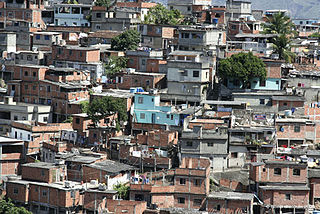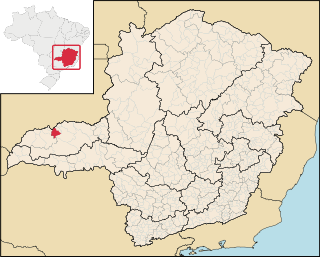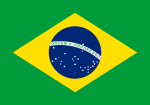
The Federal University of Rio Grande do Sul is a Brazilian public federal research university based in Porto Alegre, Rio Grande do Sul. UFRGS is among the largest and highest-rated universities in Brazil, having one of the largest number of scientific publications. From 2012 to 2019, the university was elected as the best federal university of Brazil. UFRGS has over 31,000 undergraduate students, over 12,000 graduate students, and more than 2,600 faculty members. As a Brazilian public federal institution, students do not pay tuition fees to enroll in courses offered by the university.

Fome Zero is a program of the Government of Brazil introduced by President Luiz Inácio Lula da Silva in 2003, with the goal to eradicate hunger and extreme poverty in the country. It followed the lead of projects that had already put into practice by the Fernando Henrique Cardoso administration, which was named Bolsa Escola, and which had been established in 1995.

Education in Brazil has had many changes. It first began with Jesuit missions, that controlled education for a long time. Then, two hundred years after their arrival, their powers were limited by the Marquis of Pombal. Shortly after the Jesuits' power was limited, the Brazilian government took over education and it is now run by the government through the Ministry of Education.

Bolsa Família is the current social welfare program of the Government of Brazil, part of the Fome Zero network of federal assistance programs. Bolsa Família provided financial aid to poor Brazilian families. In order to be eligible, families had to ensure that children attend school and get vaccinated. If they exceeded the total of permitted school absences, they were dropped from the program and their funds were suspended. The program attempted to both reduce short-term poverty by direct cash transfers and fight long-term poverty by increasing human capital among the poor through conditional cash transfers. It also worked to give free education to children who couldn't afford to go to school, to show the importance of education. In 2008, The Economist described Bolsa Família as an "anti-poverty scheme invented in Latin America [which] is winning converts worldwide." The program was a centerpiece of former president Luiz Inácio Lula da Silva's social policy and is reputed to have played a role in his victory in the general election of 2006. Bolsa Família was the largest conditional cash transfer program in the world, though the Mexican Oportunidades was the first nationwide program of this kind.
Conditional cash transfer (CCT) programs aim to reduce poverty by making welfare programs conditional upon the receivers' actions. The government only transfers the money to persons who meet certain criteria. These criteria may include enrolling children into public schools, getting regular check-ups at the doctor's office, receiving vaccinations, or the like. CCTs seek to help the current generation in poverty, as well as breaking the cycle of poverty for the next through the development of human capital. Conditional cash transfers could help reduce feminization of poverty.

Dois Vizinhos gained its municipality on November 28, 1961. It is a Brazilian municipality in the southwestern state of Paraná, situated in the southwestern mesoregion of the state and in the microregion of Francisco Beltrão. It is at an average altitude of 509 meters in relation to sea level. Its main accesses are by highways PR-281, PR-473 and PR-493. Its population, according to the 2020 estimate of IBGE, was of 41,038 inhabitants. In 2005, the municipality won the title of National Capital of Chicken.

Brazil ranks 49.3 in the Gini coefficient index, with the richest 10% of Brazilians earning 43% of the nation's income, the poorest 34% earn less than 1.2%.

The Federal University of Technology – Paraná is a federal university with campuses in thirteen cities located in the state of Paraná.

Exame Nacional do Ensino Médio, shortened as Enem, is a non-mandatory, standardized Brazilian national exam, which evaluates high school students in Brazil. The ENEM is the most important exam of this kind in Brazil, with more than 8.6 million registered candidates in 2016. It is the second largest in the world after China's National Higher Education Entrance Examination.

Canápolis is a Brazilian municipality located in the west of the state of Minas Gerais. Its population as of 2020 was 12,201 living in a total area of 845 km². The city belongs to the statistical mesoregion of Triângulo Mineiro and Alto Paranaíba and to the statistical microregion of Uberlândia. It became a municipality in 1948.
Brazil adopts a mixed system of public and privately funded universities. Public universities can be federally funded or financed by State governments. Private schools can be for-profit or, in the case of Catholic universities, not-for-profit.
The Federal University of Sergipe is a Brazilian public institution based in Sergipe, with campuses in São Cristóvão, Aracaju, Itabaiana, Laranjeiras, and Lagarto. Founded in 1967 by the junction of the state's existing colleges, it became its second university and its first public one. It became the state's most reputable and disputed higher education institution, ranking among the country's 40 best universities and Latin America's top 200 list.

Fernando Haddad is a Brazilian scholar, lawyer and politician who has served as the Brazilian Minister of Finance since 1 January 2023. He was previously the mayor of São Paulo from 2013 to 2017 and the Brazilian minister of education from 2005 to 2012.

The Brazilian Mathematical Olympiad of Public Schools (OBMEP) is an annual Mathematics contest created in 2005 by the Brazilian Ministério da Ciência e Tecnologia (MCT) and Ministério da Educação (MEC), in collaboration with Instituto Nacional de Matemática Pura e Aplicada (IMPA) and Sociedade Brasileira de Matemática (SBM), to stimulate the mathematics education in Brazil. It is open to public school students from fifth grade to high school. In 2014 more than 18 million students were enrolled for its first round.
In Brazil, universal basic income has been discussed at least since the 1980s. In 2001 a law was introduced by Senator Eduardo Suplicy of the Brazilian Workers Party which mandated the progressive institution of such a welfare system. By this move Brazil became the first country in the world to pass such a law. Suplicy had previously introduced a bill to create a negative income tax, but that bill failed to pass. The new bill called for a national and universal basic income to be instituted, beginning with those most in need. The bill was approved by the Senate in 2002 and by the Chamber of Deputies in 2003. President Lula da Silva signed it into law in 2004, and according to the bill it is the president's responsibility to gradually implement the reform. Since then Brazil has started to implement the bill through the Bolsa Família program, which was a centerpiece of President Luiz Inácio Lula da Silva's social policy, and is reputed to have played a role in his victory in the Brazilian presidential election, 2006.

TV Escola is a Brazilian public broadcasting television network created by Ministry of Education of Brazil in 1995. First broadcast in 1996 in a nationwide transmission, it airs exclusively educational programs.

Child labor, the practice of employing children under the legal age set by a government, is considered one of Brazil's most significant social issues. According to data from the Brazilian Institute of Geography and Statistics (IBGE), more than 2.7 million minors between the ages of 5 and 17 worked in the country in 2015; 79,000 were between the ages of 5 and 9. Under Brazilian law, 16 is the minimum age to enter the labor market and 14 is the minimum age to work as an apprentice.

Federal Institute of Education, Science and Technology is a Brazilian institution of higher education with a number of campi around Brazil. Comprising Brazil's Federal Network of Vocational, Scientific and Technological Education, it offers students a wide range of curricula, including both general education and specialized vocational and professional training in science, technology, and pedagogy.

Anísio Spínola Teixeira was a Brazilian educator, jurist, and writer. Teixeira was one of the reformers of Brazilian education of the early 20th century, being an advocate of progressive education in the country. He was one of the co-founders of the University of the Federal District, in 1935, and of the University of Brasília in 1960.
Auxílio Brasil was the social welfare program of the Government of Brazil, created during the presidency of Jair Bolsonaro. Announced in October 2021, the provisional measure was sanctioned by Bolsonaro after passing through both legislative houses on 30 December 2021, replacing Bolsa Família. However, after Lula's reelection as president of Brazil in 2022, he declared that he would rename the program to Bolsa Família, putting an end to Auxílio Brasil.





















